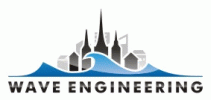Estonian Science Foundation, Grant 8870 “Wave induced hazards in Estonian coastal waters” (Lained ohufaktorina Eesti rannavetes), 2011–2014. Responsible Scientist: Dr. Ira Didenkulova
Although the Baltic Sea is one of the most studied water bodies in the world, our knowledge about its wave climate is still very fragmentary. The Baltic Sea has an extremely complex geometry. Highly varying wind fields frequently lead to considerable differences of wave conditions in different regions. All these features become especially important in shallow coastal areas where wave properties are very sensitive to local bathymetry, while wave induced hazards are especially dangerous there and frequently lead to not only damage to coastal structures and loss of lives but also to deterioration of sedimentary coasts.
A generic and widely spread wave induced hazard is the formation of unusually high and short-lived surface waves (so-called freak waves). Occurring in the nearshore they result in a sudden flooding of the coast. Similar impact on Estonian coasts is caused by waves induced by high-speed ferries.
We aim to identify and quantify the magnitude of hazards caused by impact of large and/or unusually high wave events (rough seas in extreme storms, ship waves and freak waves) on Estonian coasts by means of experimental and theoretical analysis of the relevant wave-induced phenomena.
For these purposes we will (i) use wave data from the archive of visual wave observation, (ii) conduct our own wave measurements in different nearshore locations along Estonian coasts and (iii) perform extensive numerical simulations of potentially dangerous wave events. A correlation analysis of the wind and wave data will be carried out in order to find the factors responsible for extreme wave generation and to reconstruct „the worst case”. Ship waves will be used as well-controlled examples of dangerous waves with limited impact. The run-up properties of ship waves will be measured at the coast using different measuring staff and video recording. The resulting statistics will provide us with the interrelation of the run-up height and the amplification factor on the properties of the incoming wave. Specific bottom configurations can also lead to extreme wave amplification at the coast. The coastal zone of Tallinn Bay and some selected sections of public waterfronts will be inspected for the presence of such profiles and will be studied experimentally and theoretically. A map of such “hazardous” bottom profiles and wave amplification along them will be provided. The combined analysis of these phenomena will result in a wave hazard assessment for Estonian coasts.
